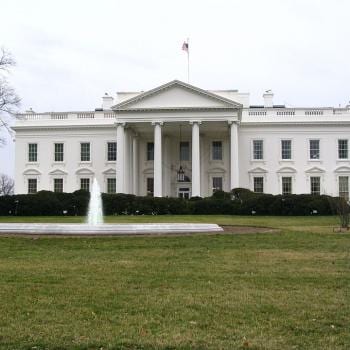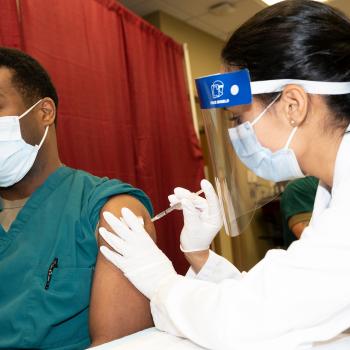In two previous posts (Taking Language at its Word? and Meaning Matters) I have argued that, since words come cloaked in meaning, we ought not assume that the truth is readily available in them. In other words, telling the truth is not a matter of saying the right words, it is a matter of conveying the right meaning.
This hardly seems controversial. And if it is to you, then, scroll through the comments of this blog (and others) and find what I mean in all that bickering over what words mean. If it were only a matter of using factual information, language, images, and so on, then, telling the truth would be quite simple and we would have very little to talk about.
Regarding abortion, it seems that if getting our words right, and being blunt and direct with them, were the key, then, the task is rather straightforward. As I see it, this is not the case.
The word itself (‘abortion’) comes in many shades of meaning. Now, I do not intend to say that truth is what we make of it. But it is to say that words and meaning are intimately attached to belief. Beliefs can be dead wrong and even destructive, take racial supremacy as an example. But, there is not denying that, if we desire to bring about beliefs that are rooted in the truth, then, we must do more than use words that we regard as having a single, absolute meaning.
At this point you might wonder what is so ambiguous about a word like ‘murder.’ It seems abundantly straightforward. But this clearly is not the case. In jurisprudence there are degrees of murder. In ethics there are different kinds of killing. Death itself is not a straightforward word, it only becomes real to us in the context of our beliefs and the meaning they create for it in a sentence, a paragraph, and so on. The mere fact of someone being dead tells us very little (assuming that they are not laying there screaming “I’m not dead yet!”).
Nonetheless, many good-willed people say, “Abortion is baby killing, period!” They usually mean that there is no need to be sophisticated or academic about it—and anyone doing so is some kind of out-of-touch relativist. Abortion is, as a matter of medical fact, murder. By this logic, murder may come in degrees, but it is still something that should be illegal and intolerable. Anyone who provides of abortions, then, is a killer of babies and, therefore, a murderer. End of story.
What is ignored by this sensible argument is that, to those who advocate for it, abortion is not murder. In fact, abortion advocates see it as an affirmation of the dignity of woman. Many of them volunteer and organize to preserve the right to abortion out of the belief that those who say that “Abortion is baby killing, period!” are in fact trying to subvert women.
This is not theoretical. A good and honest friend of mine told me that if Roe vs. Wade was repealed he and his family would move to New Zealand. I asked him what he would think if this came democratically, through appeals and with public sentiment to support it (since he is big fan of democracy). He replied: “Do you have a daughter?” I admitted that I did not. He went on to say, “Until you have a daughter, you won’t understand.”
I happen to believe that my friend is wrong about the facts. However, I was deeply moved by his love for his daughter. For him, and others, legal abortion functions as a safeguard of human dignity. There is little doubt that he advocates for abortion out of love for his daughter.
But, let’s play pretend. Maybe all I needed to do in that moment was reach into my pocket and pull out several graphic photos of aborted infants and say, “You clearly love your daughter, but what about these daughters? Can’t you see, this is murder? Infanticide even!” I could even add, “Let me tell you the facts about what happens when babies are aborted, in full detail…”
Of course he would deny that the fruit of the womb is a baby, a human person. So, then, I would point back to the pictures of the earliest stage of pregnancy and say, “Look at the toes, and fingers, and head! Look at the tummy and legs! This is a person! This a baby! This is a human!”
At this point, he might say (as many do) that if I really believed that I would be working day and night to throw every abortion provider and woman who get abortions into prison as murders. He would also say that, under this logic, woman at risk of dying, raped, and other tragedies, would be required to go through physical and mental trauma. Add to that, he would say, all this will do is reinstate the era when women performed their own abortions with coat hangers and died from infection or remained mutilated for life.
This hypothetical is too congenial. The most predictable response from my friend would be: “Are you calling me an advocate of murder?” If I was to be consistent I would say, “Yes.” He would then reject me as ridiculous since, after all, he is sure that he is not an advocate of murder.
These possible reactions would be devices to avoid the question of the facticity of abortion as evidenced by the photos and my factual language. And, even if he acknowledged the facts of abortion and so on, he might advocate for a consequentialist ethic.
But the greater point would be that his belief would stay the same, or become even more convinced that those people who think he is an advocate of murder, among other things, are crazy. And his belief, while wrong in many ways, would be rooted in truth, real truth.
It is rooted in the truth that there are two lives at stake in abortion. Pointing to the child as the sole issue ignores the life of the mother. Just as pointing to the rights of women as the sole issue ignores the child. Both approaches use facts and arguments that create a cycle—and a business—of polemics, but they both seem to think that their opponents favor one at the expense of the other. Based on that belief, neither of them can begin to actually address the whole truth of abortion: mother and child.
This is the beauty of the approach by Feminists for Life and others who understand that the Gospel of Life is not brought about and hearts do not change with facts and chop-logic; they only change with love for the whole thing in question.
You see, my friend can only begin to have a frank and direct conversation with me when he believes that I truly want the best for women, for his daughter. Until then, my words have drowned in meaning that I don’t intend, but even in the best of spirits, convey anyway. If I want him to realize that the best for his daughter’s dignity is a culture of life that embraces the reality and challenges of loving all persons (including pre-born babies), then, it would be best to throw away my pictures of aborted babies and begin to try to understand and love him better.
Last week we took a day-trip to Cincinnati to visit a friend of ours. On the way there, we saw two billboards in black with white print. The first asked: “If you were to die today, do you know where you would end up?” The second stated: “Hell is Real.” On the way back we saw the other side of those billboards with the Ten Commandments listed; five on one and five on the other. My wife shook her head. I felt ashamed.











